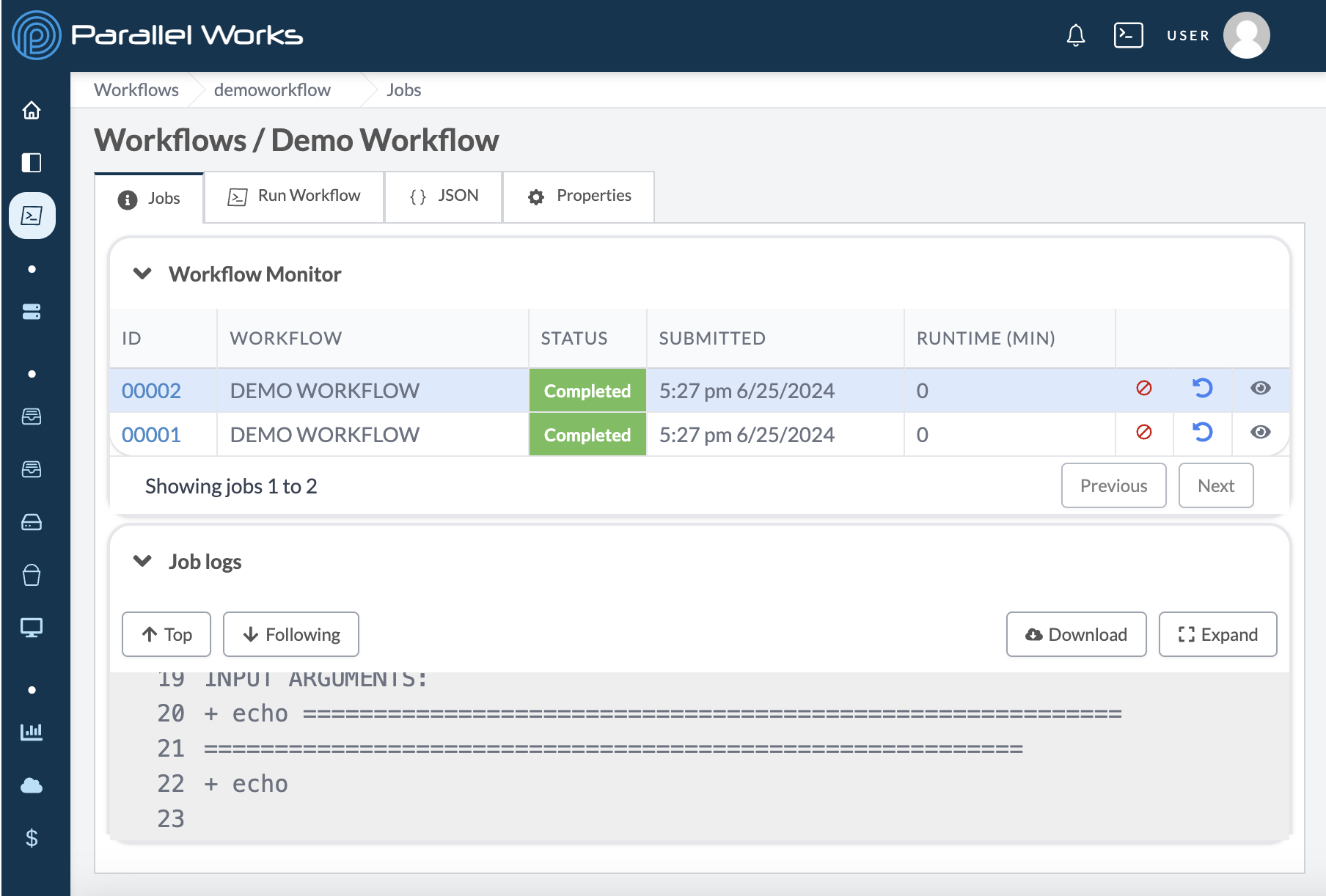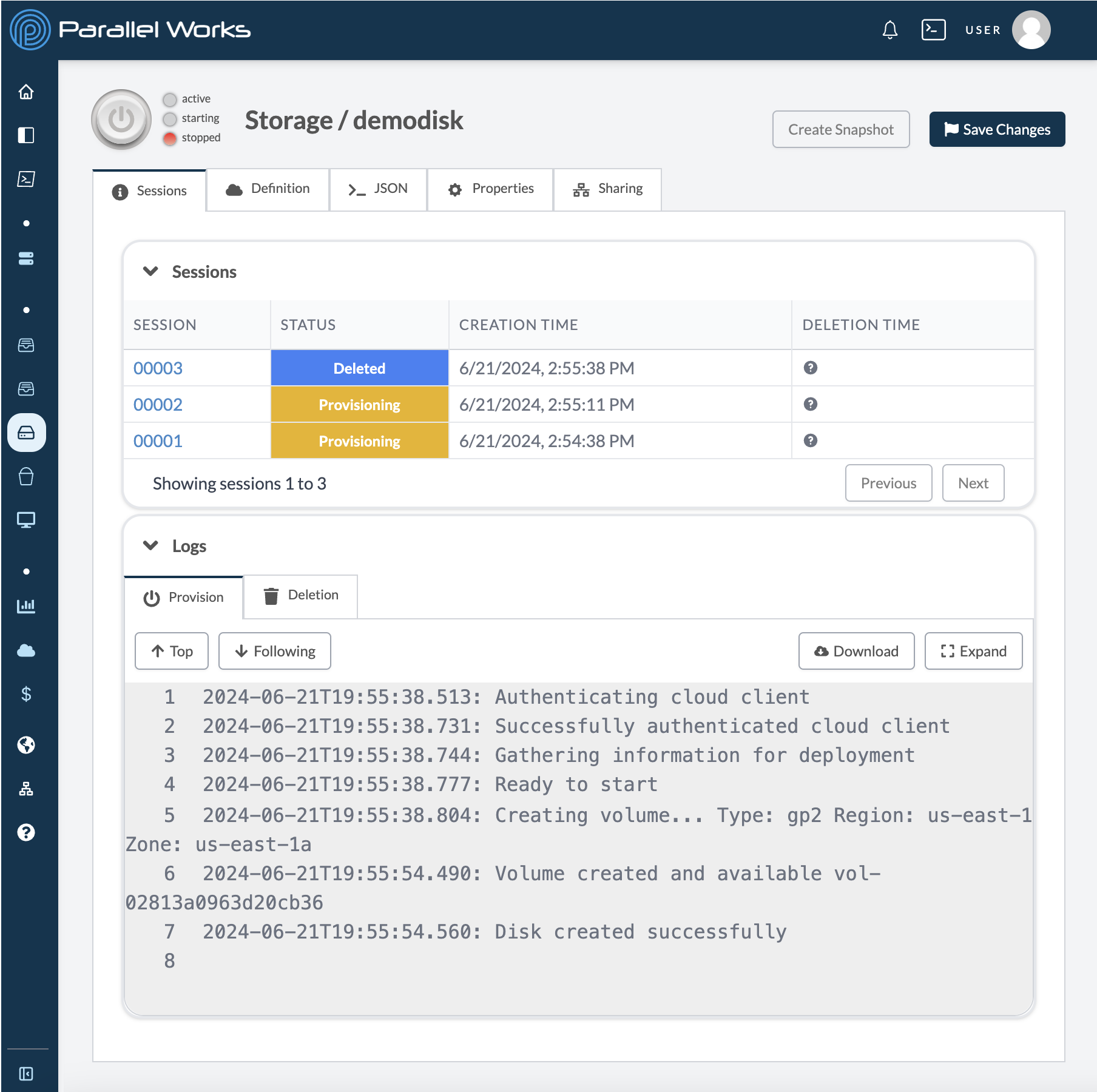Monitoring Your Work
ACTIVATE features several data monitoring modules as well as a monitor dashboard to track your work.
Home
The Home page displays important data at a glance.
Workflow Monitor
This module shows a snapshot of your most recently run workflows.

Data columns for your workflows include:
- ID
- Workflow
- Status
- Submitted
- Runtime (Minutes)
If you click a workflow’s ID number or its name in the Workflow column, you’ll be taken to a more detailed view on the Workflows page.
A workflow’s Status can be Started, Running, Completed, Canceled, or Error.
The Workflow Monitor also includes three important action buttons:
- Cancel Run
- Run Workflow Again
- View Active Workflow
If you click the icon to re-run a workflow, you’ll be taken to the workflow’s configuration form on the Workflows page.
Storage Resources
This module shows your favorited storage resources and their status (active, starting, or stopped).

If you click the information icon, you’ll be taken to the storage’s configuration form on the Storage page.
Compute
This module shows your favorited resources and their status (active nodes and requested nodes if active or stopped if inactive).

The navy bar reflects the number of maximum nodes a resource can have. In the screenshot above, the resource has the controller node and a partition that’s configured for 10 maximum nodes, for a total of 11 possible nodes.
The green bar reflects the number of active nodes on a compute resource. In the screenshot above, the resource is active but not running any jobs, so there is 1 active node (the controller).
If you click the gear icon, you’ll be taken to the resource’s Definition tab on the Clusters page.
If you click the information icon, you’ll be taken to the resource’s Sessions tab on the Clusters page.
Workflows
On the Workflows page, click a workflow. You’ll be taken to the workflow’s Jobs tab.

The Workflow Monitor here mirrors the Workflow Monitor from the Home page.
The Job logs module shows details about specific workflow sessions. When you navigate to this page, this module shows No log found until you click a job number in the ID column.
If you navigate to this page after clicking the eye icon on a running workflow, the Job logs module will show details for that active session.
You can save workflow logs by clicking the Download button.
Clusters
When monitoring a cluster, the most important features are its Status and Jobs tab.
Storage
When you click on a persistent storage resource, you’ll be taken to the storage’s Sessions tab.

The Sessions module shows details about all your sessions with this storage resource, including:
- Session
- Status
- Creation Time
- Deletion Time
The Logs module shows details about specific storage sessions. When you navigate to this page, the Provision and Deletion tabs here show Log not found until you click a number in the Session column.
You can save storage logs by clicking the Download button.
Please note that ephemeral storage resources don’t have this page because they’re created and destroyed with a resource.
You can see more details about ephemeral storage resources by navigating to their attached resource and clicking on the Storages tab of the Logs module.
Monitor
In the sidebar category Monitor, there are two pages: Cost and Instances.
Cost
The Cost page shows your cost data across ACTIVATE. For more information about this page, please see Monitoring Costs.
Instances
The Instances page shows your active and deleted clusters within the last hour.
Each instance listed here includes the following data:
- Pool
- Session
- Region
- Number of Running Instances
- Started
- Deleted
- State
If a cluster is active, its State will show Running in yellow.
If a cluster has recently been shut down, its State will show Deleted in blue.

If you haven’t started or stopped a cluster within the last hour, the Instances tab will show the message No instances found.
